By Dan Moriarty
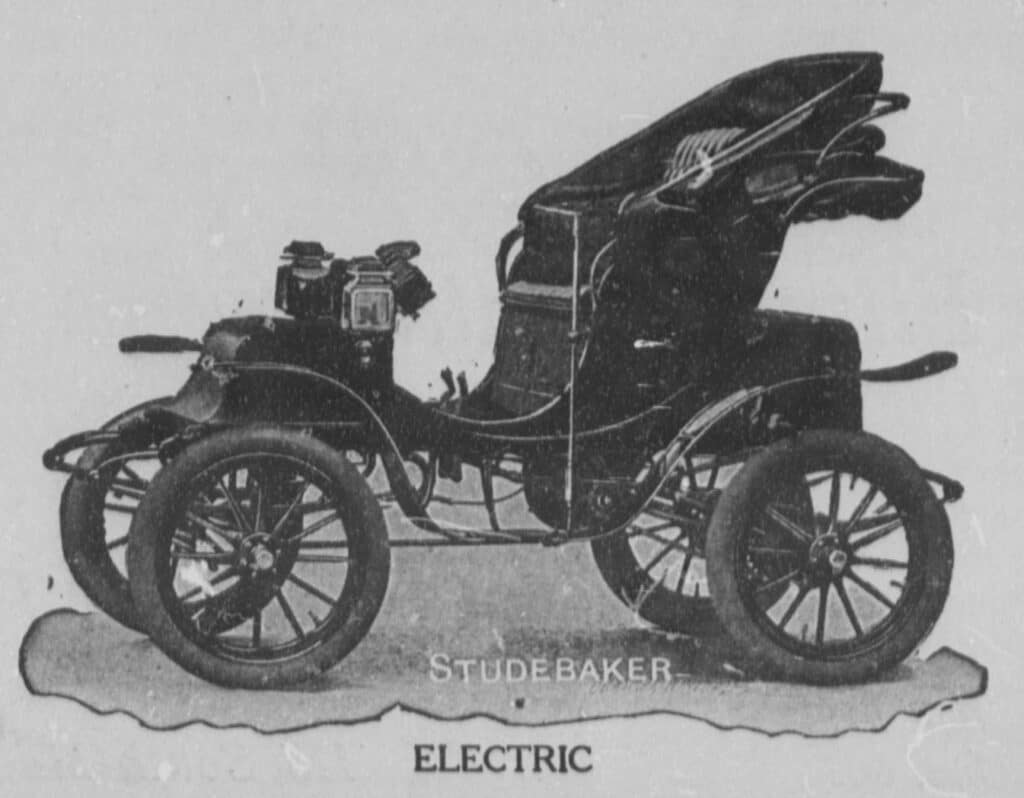
Part 1: Early History
Electric vehicles have seen a dizzying advance in the last decade, both in terms of market share and sophistication. To many, their increasing ubiquity is novel, and we get the sense we are on the cusp of something new. Outside of niche engineering concepts or small cars for the die-hard environmentalist, electric vehicles were almost non-existent for most of our lives. None of us have ever shared the road with so many electric cars before.
But what is surprising to many, including myself, is that there was a point in time when there were more electric cars on the roads than gas-powered cars. What we are witnessing is not the beginning of the age of EVs but a resurgence of an industry that has been dormant for almost a century. We’ve written previously about modern electric cars here at Whaling City Solar, but how did we get here?
In the last two decades of the 19th century, the automobile industry grew from a niche toy for the elite to a utilitarian machine. With the proliferation of the automobile came a wild west of innovation. Standards, design theories, and consumer preferences had yet to be hammered into this budding industry. The result was a patchwork of different styles and propulsion systems. Transportation was at a new frontier, and on a walk in a city like New York City, one would see trains, trolleys, horses, gas-powered cars, electric cars, and even steam-powered cars.
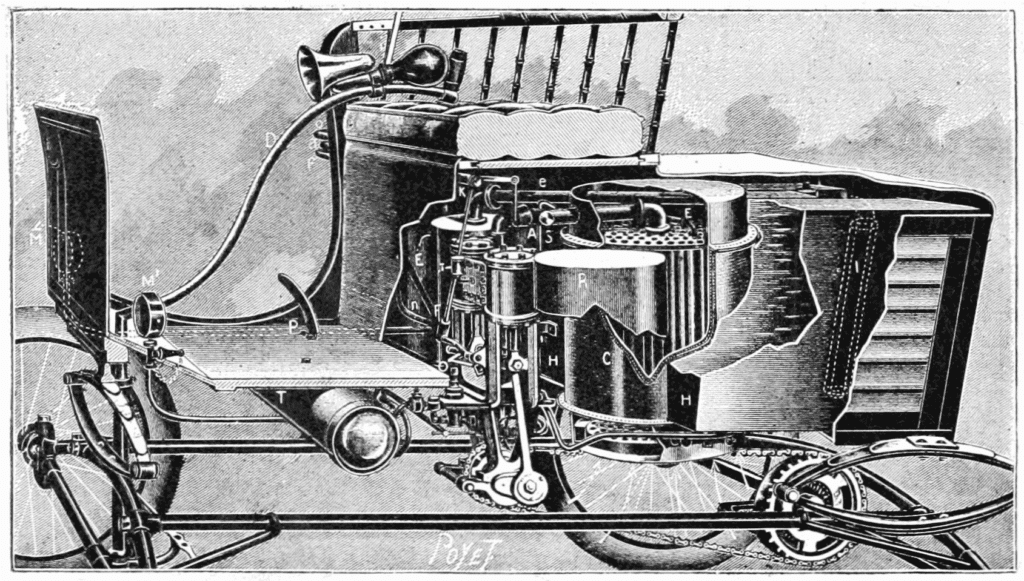
In 1900, there were 4,192 vehicles registered in the United States; 1,575 of them were electric, 1,681 were steam-powered, and only 936 were gas-powered. The steam car in 1900 was the predominant form of rail-free motorized transportation. Before writing this article, I was not even aware there was such a thing as a steam car, never mind it being the most common car at one point. However, steam cars would soon lose out to gas and electric cars. They suffered from limited range due to the availability of water. Most cars were found in Boston, New York, and Chicago, and the winter temperatures froze the water used in the steam engines, making the vehicles unreliable.
In the last decades of the 19th century, many inventors and analysts actually assumed electric cars would dominate the industry over gas and steam. The electric trolley industry, which had been well established by this point, had resulted in advancements in DC motor and circuitry technology. In contrast, the gas engine was still in relative infancy. Many believed the technology of the electric trolley would be easily scaled down and ported over to the electric car.
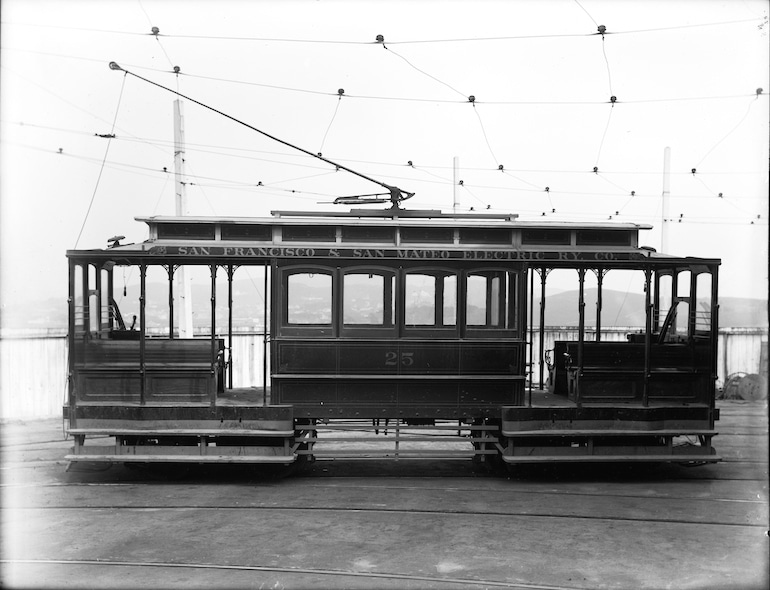
The electric trolley had already been replacing the horsecar at an impressive rate, which was assumed would translate to personal transportation. Familiar talking points were echoed by EV enthusiasts just as they are now – EVs were cited as being quiet, free of on-site emissions, fast acceleration, and impressive low RPM-torque ratios. All advantages held over the gas and steam cars.
However, electric cars needed a portable battery, unlike the electric trolley, which maintained a constant connection to its power source via suspended cables above or an electrified rail below. The battery would prove the toughest nut to crack, and despite the dedication of innovators, no one could develop batteries with a high energy-to-weight ratio. Between 1900 and 1925, car battery storage capacity increased by 300%, range by 230%, and maintenance cost decreased by 63%. Even with these improvements, the storage of these early batteries simply could not compare to that of a gas tank. The gas car holds far more “energy” in a much smaller tank. Refueling a gas tank also takes significantly less time than charging a battery.
By 1910, many EV proponents had sobered into realists and foresaw a bifurcation in the automobile industry, with gas and electric vehicles used in different niches. Most analysts compared electric and gas cars to the horse rather than to each other. A common idea at the time was that households would have both an electric and a gas vehicle for different purposes. However, most Americans could only afford one car, if any.
EVs showed promise at lower speeds over shorter distances. Battery storage issues were not as troublesome in local, low-speed situations, but battery power was drained far quicker at high speeds. EVs were ideal for local urban transportation, such as taxis or last-mile delivery services. Another factor handicapping the personal EV industry was the maintenance required. Installing charging stations in homes was expensive, and the early batteries required constant maintenance by skilled technicians. There were many expenses associated with maintaining just one EV.
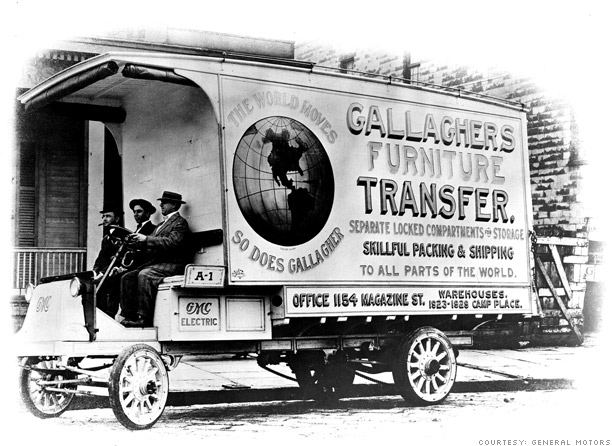
However, these expenses were more manageable with a fleet of EVs. A business operating taxis or local delivery services benefited from the efficiency of EVs at slow speeds and shorter distances. EVs also started quicker and did not need to be shifted like a gas transmission, meaning even quicker movements throughout a city. With a fleet of EVs, the costs began to make more sense, as having a technician on staff to service all the EVs in a fleet was more economically efficient.
Enterprises with fleets of electric vehicles would maintain a service shop that would always have batteries charging, meaning their cars could return to the shop, swap the low battery for a fully charged one, and be back on the job quickly. Meanwhile, the battery they just dropped off would go back on the charger for the next vehicle. This swap system was competitive timewise with refueling at a gas station. In addition to low-speed stop-and-go being more efficient for an EV than gas cars, running localized fleets meant EVs were always within range of their garages. In a term showing how close this was to the days of the horse, these shops or garages were called “stables.” This differs from long-distance fleet services, where vehicles travel far from the home garage at faster speeds. One primary yet under-analyzed reason for the failure of the electric car to become the dominant form of transportation in the early 20th century is the lack of infrastructural support by utility companies.
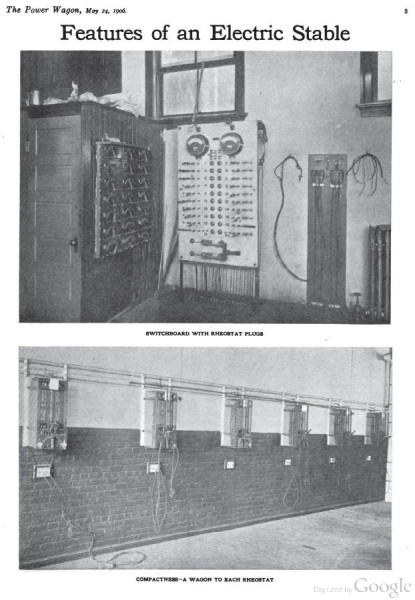
Most analysts believed utilities would support the widespread adoption of EVs as they would improve a utility company’s load factor. The load factor compares how much energy was used versus how much could have been used. A higher load factor indicates more consistent usage and greater efficiency, while a lower load factor suggests a high peak demand but lower usage overall. This can be less efficient for the utility company.
With most EV charging occurring at night while people were sleeping, it was an ideal spread for utility companies to have everyone driving EVs. By the first decade of the 20th century, Proponents argued that the average home without an EV brought utility companies $3.08/month in revenue. In contrast, one average EV personal car brought in $6.87/month, and one EV truck could bring in as much as $20/month. The newly invented flat iron consumed 10 kWh/month, whereas the typical electric delivery van consumed 300 kWh/month.
However, for whatever reason, utility companies focused far more effort on promoting the adoption of in-home electric appliances than promoting EVs. Because of this lack of support, just like modern consumer hesitations toward electric cars, a lack of charging infrastructure left many worried about being stranded with a dead battery.
In addition, the competition between DC and AC electrical engineering had yet to be standardized, meaning that charging in some areas would not work the same as in others. At the same time, the electric start for gasoline vehicles became commonplace, replacing the hand-crank mechanism. This allowed gas cars to start easily without needing elbow grease, a feature that made the use of gas cars more accessible and less intimidating.
Electric cars also could not compete with their gas counterparts in speed and cruising range. Initially, this did not worry EV proponents as most long-range travel was done by train or boat, and good roads were typically only found within cities. However, the expanding US road network began to change this calculation. As roads improved, so did the efficiency of gas cars. Better roads meant cars could be built less rugged (and more efficient) with smoother tires and lower ground clearance, which improved aerodynamics and reduced drag. Many argued that the EV would replace the horse and buggy for the upper and middle classes and would never directly contend with the gas car. An excerpt worth quoting at length by historian Richard H. Schallenberg summarizes the collapse of the personal EV,
“Three major reasons for the quick decline of electric power are high initial cost, high operating cost, and short range. Although these were serious limitations and were, to a great degree, unavoidable, they were also partly self-imposed. Urban dwellers who maintained a horse and buggy were well-to-do, and since the electric automobile was designed to replace the buggy, it was built expensively. From 1910 on, some attempts were made to build inexpensive electric cars to stave off the final victory of gasoline, and the prices of these cheap electric suggest that there was no inherent reason why electrics had to be very much more costly than internal combustion cars. Moreover, the range of early electric pleasure cars was deliberately kept short, usually 30 or 40 miles, because it was considered unnecessary to provide a large, cumbersome number of batteries for a car that would only have to go short distances around town at slow speeds. After all, that was what the horse and buggy did. One authority said that giving an electric car a greater range than about 30 miles was unnecessary because that was all a horse-drawn vehicle could do without a change of horse as time went on. Inventors realized that both the horse and the electric car were being replaced by gasoline; many of them extended the range by adding more batteries to their cars.”
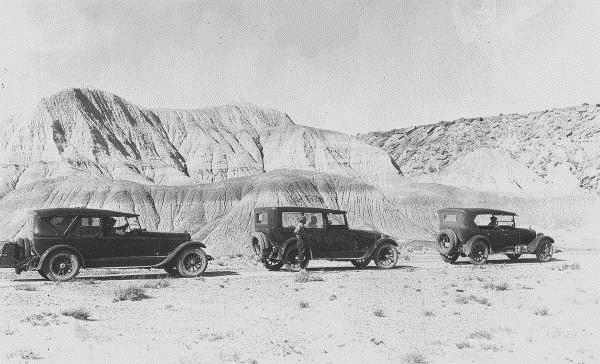
Another reason for the downfall of the EV was a more spiritual one. The automobile represented freedom for the driver, the ability to go anywhere, where trains did not go, and faster than with a horse. The EV, with its limited range, simply could not make this dream a reality, but the gas car could. By the 1920s, the electric car was perceived as weak and impotent in terms of performance compared to the gas car, and in many situations, it was. Cars are consumer products, and as much as they are utilitarian machines, electric cars were simply not viewed as “cool.” One consumer was interviewed saying, “I would ride in an electric car if it were not for the fact that all my neighbors pass me in their gasoline machines.”
However, while the EV failed as the personal car, its life continued into the 1940s as a niche commercial vehicle like taxis and local delivery. In Britain, it was favored for early morning milk deliveries due to its quiet electric motor. These commercial enterprises made use of overnight electrical rates from utility companies to charge all their packs for the next day. In Europe during the early 20th century, much like now, some municipalities had regulations that favored quiet and clean electric vehicles, so cost was not always the only factor. However, interest in electric cars would largely fade away outside of these niche use cases, which were steadily eroded by ever quieter and more efficient gas-powered vehicles.
Part 2: Wake Up Calls
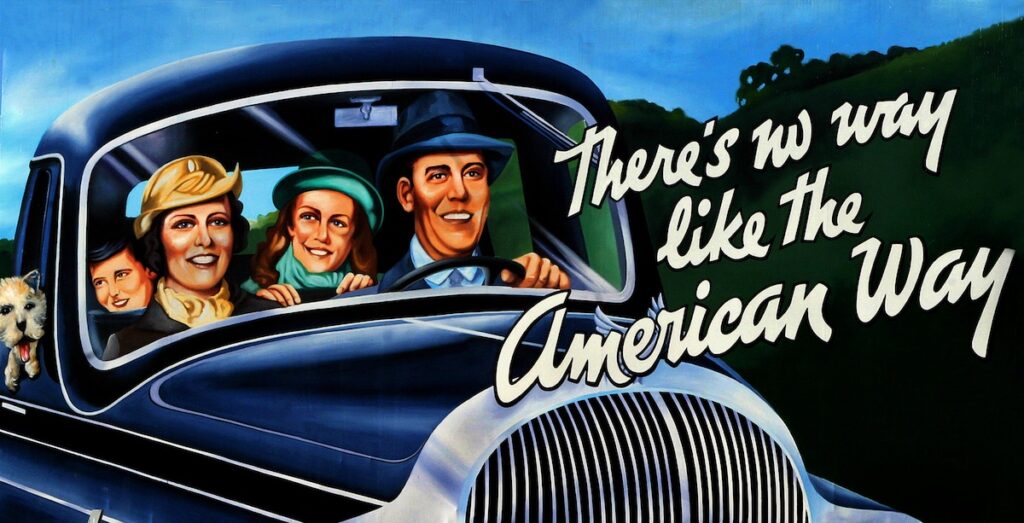
Gas and diesel vehicles became industry standards worldwide, especially after World War Two. The war spurred rapid innovation in mechanized warfare, and these insights spilled over into the consumer economy afterward. Engines were more robust and durable than ever before. America’s post-war love affair with the automobile was in full swing, the nationwide network of highways was under construction, and the age of the American muscle car was underway. The National Interstate and Defense Highways Act of 1956 began the connection of America via highways. The reason for the word defense in the name of the act was a response to the looming threat of nuclear war born out of the ashes of the Second World War. The idea was that by spreading the population out of the cities via suburban sprawl, the United States would be more resilient to a nuclear assault on its major cities.
Then, another war ended the dream. Middle Eastern wars between Israel and the Arab States rocked the 1970s. The United States, with much of the West in tow, threw its lot in with the Israelis. As a retaliation for supporting Israel, the Arabs enacted an oil embargo against the United States and Europe, resulting in gas shortages, long lines at gas pumps, and skyrocketing gas prices.

This was a radically different situation than at the beginning of the century when America was a world-leading oil producer and oil dependence was not a concern. These oil shocks dovetailed with the space race, producing the first Earth images seen from space. Seeing Earth as a singular object and the mounting realization that pollution was a problem kickstarted the modern environmental movement. This movement achieved victories such as the Clean Air Act, the Environmental Protection Agency (EPA), the Clean Water Act, and the Muskie Act. Between growing environmental awareness and oil shocks, R&D departments across the automotive industry once again became interested in EVs.
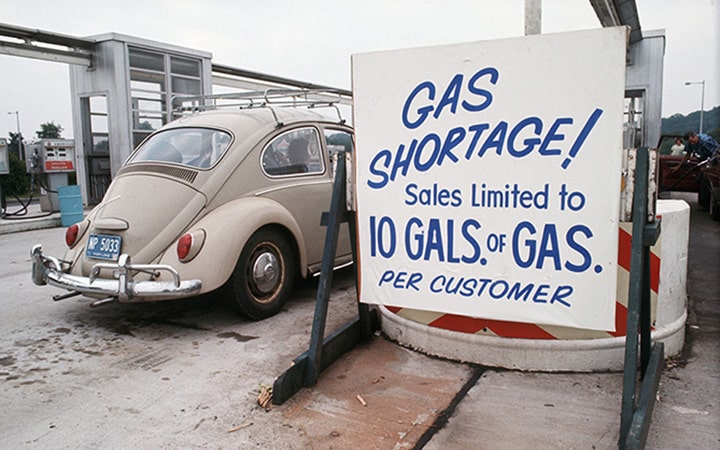
Geography also played an essential role in the ebb and flow of the market. Los Angeles was situated in an oil-producing region, and with that cheap local fuel, it grew car-dependent and opted for buses instead of electric trams and subways. This is different from the Northeast, which has little oil reserves and opted for densely packed, electric rail infrastructure.
However, LA’s geography and its access to Asian markets for automobiles, which gave it access to cheap and efficient Japanese cars, spurred the downfall of the muscle car in one of America’s largest cities and car markets. During the 70s – 90s, the Japanese and other Asian manufacturers pillaged the American auto market with their small and fuel-efficient vehicles, set against the backdrop of the oil crises, which were far more attractive to utilitarian consumers than the large roaring and lumbering American muscle cars. Los Angeles is also situated against mountains. These mountains trap smog and pollution from car tailpipes, becoming so untenable that state and federal governments issue emissions and air quality regulations.
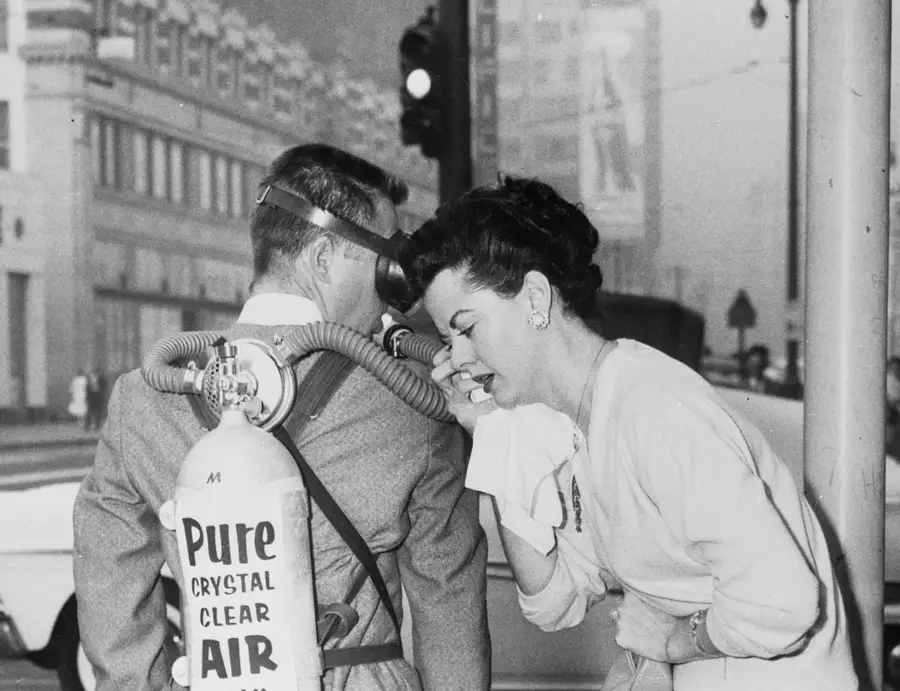
This culminated in several government acts to resume innovation in electric and hybrid vehicles. From consumer satisfaction to national security concerns, it was clear that the status quo of relying on imported oil pumped into inefficient large engines was too fragile. In 1976, the US Congress passed the Electric and Hybrid Vehicle Research Act, and the Department of Energy established programs specific to electric vehicle development.
In 1985, the Swiss initiated the “Tour de Sol.” – the first race of solar-powered cars, and In 1987, BMW developed its second EV conversion vehicle. Between 1964 and 1998, GM produced 15 major prototypes of electric and hybrid cars. Most notable were the first 1964 Electrovair, the 6×6 military truck in 1968, the Electrovette II in 1979, the sunraycer solar-powered race car in 1987, and the electric shuttle bus in 1993. The sunraycer won Australia’s First World Solar Challenge – a race between electric vehicles. During this time, GM tested all three approaches to electric cars – fuel cell, hybrid, and fully EVs.
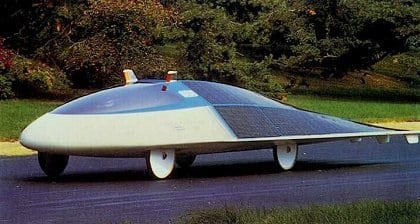
In 1988, The United Nations converged its first IPCC (Intergovernmental Panel on Climate Change), to which several major economies pledged to reduce greenhouse gas emissions and fund R&D into how to do so. In 1990, GM produced the first mass-produced electric car, the EV1. The vehicle was leased, not sold, but in 1999, production and leasing stopped as they were deemed unprofitable. California, one of the world’s largest economies and car markets, has led the charge in regulatory pressure for electrification and emissions standards. In the 1990s, California’s Air Resources Board (CARB) unveiled requirements for car markers to have 2% of their fleet emission-free by 1998, 5% by 2001, and 10% by 2008 to sell cars in the state.
Early into the Cinton-Gore administration, Vice President Al Gore organized research into high-efficiency vehicles and helped Congress fund the “Partnership for a New Generation of Vehicles. In 1997, Toyota introduced the Prius, and its relative success created added pressure on GM and other automakers, resulting from pressure from the Japanese and California governments.
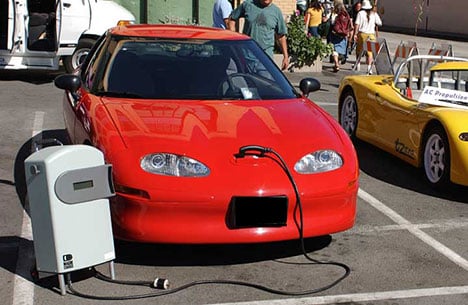
In 2003, Tesla Motors was formed, planting the seed that would almost singlehandedly shift the EV industry from niche engineering research to a substantial and growing portion of the general car market. In 2007, GM released the Volt concept at Detroit’s North American Auto Show. The hybrid Volt differed in that the electric motor was the emphasis, and the gas motor was the supplement. From the 1970s until the end of the 20th century, the groundwork for an electrified future was being laid, albeit very slowly and piecemeal. It would not be until the mid-2010s that these innovations and government support paid off, and electric cars began to see their second renaissance.
Part 3: Present & Future
The electric car market of 2024, despite its similarities to the early 20th century, is an entirely new beast and would be unrecognizable even just ten years ago. Most major automotive companies offer hybrids and electric models. One can now buy full-size trucks like the Toyota Tacoma with hybrid engines. Chevrolet has unveiled a fully electric Silverado truck. Electric performance cars are rolling off the line with genuinely unbelievable stats. The Rimac Concept Two, a fully electric hypercar, achieves 0-60 in 1.85 seconds. For comparison, the Bugatti Chiron, the world’s fastest gasoline car, reaches 0-60 in 2.4 seconds. The Rimac, Tesla, and the subsequent electric sports cars by Audi, Porsche, Lucid, BMW, and others have shaken the perception of electric vehicles as being weak, compromised, or just “not cool.”
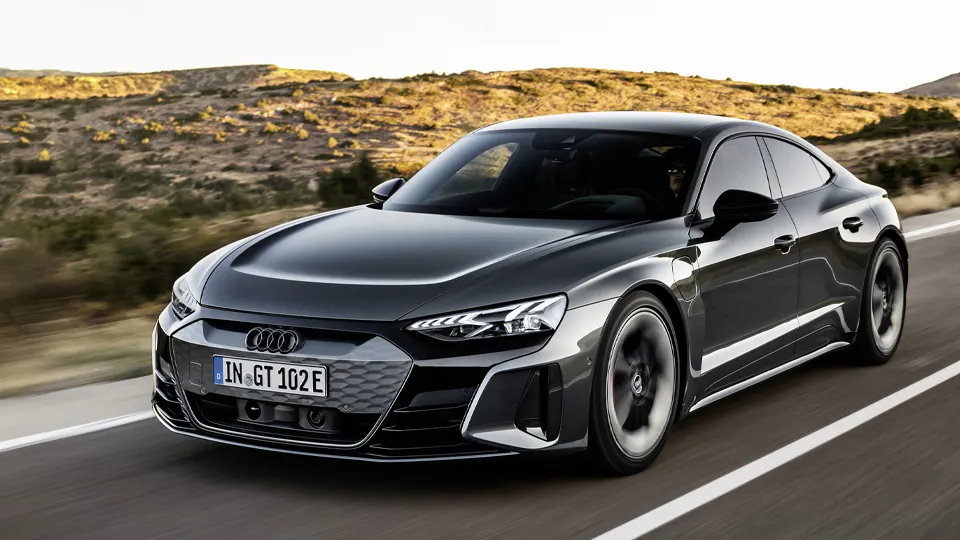
The similarities between now and then are predominantly the reservations of consumers. Charging infrastructure, while far easier to apply to homes now, is still lacking publicly. While gas stations dot the country reliably, charging stations are less ubiquitous, leaving many to worry about their availability once one leaves large metropolitan areas. The time-to-charge is still lacking compared to the relatively quick time to fill a gas tank, and many consumers want to wait to see how well batteries hold up as they age.
The differences between now and then are far more pronounced in favor of the EV market. As stated earlier, almost all buildings in Europe and America have been electrified with standardized equipment, vastly reducing that barrier to entry. The sophistication of the grid over the last century, along with the advent of air conditioning and ever more electrical gadgets in a home, has predisposed the infrastructure to support EVs. Suburban sprawl has ballooned since 1910, meaning far more Americans live in houses that can support charging, while it is also more common for Americans to have two vehicles (meaning the vision of one gas and one electric is more palatable).

The most consequential difference between now and then, pushing the industry toward electrification and away from gasoline, is ironically the result of the success of fossil fuels. Our modern world, built atop an infrastructure dependent on hydrocarbons, has created an unsustainable flow of greenhouse gases into the atmosphere. The realization of this unsustainability and the climate change resulting from it is prompting both consumers to desire more fuel-efficient or fully electric vehicles and governments to demand it, using both carrots and sticks. Governments worldwide have set dates after which the sale of new gas & diesel-powered cars will be banned while offering grants and tax incentives to develop and sell electric vehicles.
Great Britain, France, India, Ireland, Poland, Turkey, and others will ban the sale of internal combustion engines by 2040; by 2050, only zero-emission vehicles will be allowed on the road. China and California have slated 2035 as the cut-off for all newly sold cars to have zero emissions. President Biden’s Inflation Reduction Act (IRA) includes generous tax credits for American car buyers to purchase American-made electric and hybrid cars.
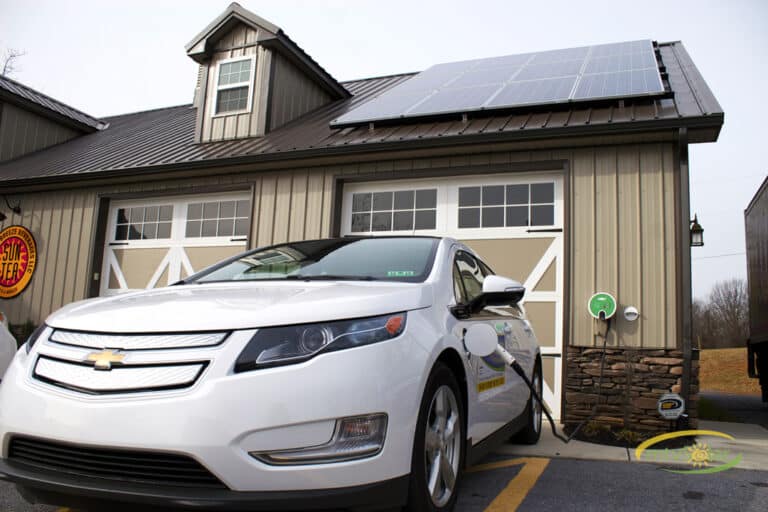
With this push toward sustainability has come a strong push for wind, solar power, and battery storage. As the push for renewable energy production merges with electric propulsion, homeowners who go solar, use home batteries and have electric vehicles are finding themselves comfortably detached from the ebb and flow of oil and gas prices.
We find ourselves at another inflection point in the history of transportation—surprisingly similar yet remarkably different to the inflection point of the early 20th century. When combined with renewable energy, electric vehicles provide a critical opportunity to find a better balance with our ecosystems while continuing to do what humans do best—innovate, push boundaries, and go faster.
Staff Writer: Dan Moriarty

